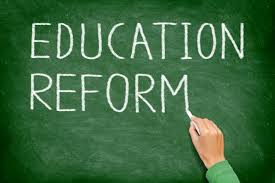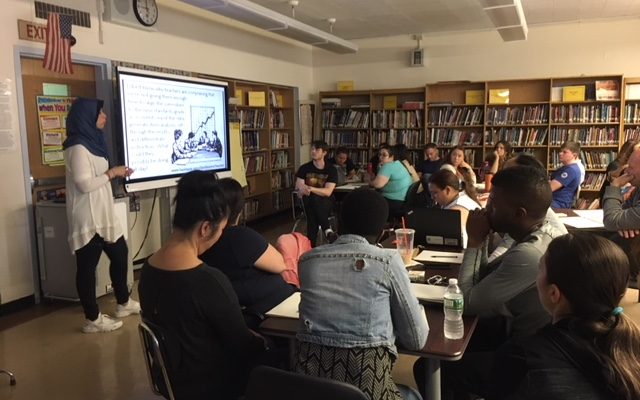Understanding Federal Funding Part I: 3 Types of School Funding

Not only do school systems receive state funding but also federal funding through various programs and initiatives. Therefore it is important to understand three types of federal funding methods that transpired throughout history which include categorical aid, grants, and Title I funds.
Currently, the federal government contributes approximately 9% annually, or about $71 billion, to the education of the nation’s elementary- and secondary-aged children. The amount of support varies from state to state, with some states receiving more federal monies. South Dakota receives the most federal funding (an estimated 16% of the state’s entire educational budget), while New Jersey gets only 3% of its funds from federal sources. The U.S. Department of Education was allocated $63.7 billion for fiscal year 2010. The department distributes funds to schools, determines major education issues and focuses attention to them through provision of funds, instigates programs designed to ensure an equal education for all, and engages in research activities that result in an accumulation of educational statistics.
Before the 1980s, federal funding was distributed to states solely in the form of categorical aid
(or grants). Basically, money was designated to fund several federally sponsored programs and to support federally based educational legislation. Categorical aid was spent on specific items or in particular ways. For example, money for textbooks was to be used exclusively for textbooks. Schools and districts had to track how money from categorical aid was spent and had to report these expenditures to the federal government to ensure that money was used in the manner for which it was intended. Any unused funds had to be returned to the provider, if they were not spent within an allocated time frame. Many critics claim that the stipulations attached to federal monies allowed the federal government to more readily influence state-based education, as districts had to accept federal regulations in order to receive the funding.
In the 1980s, the Reagan administration introduced the notion of the block grant. With this method of funding, monies were dispersed to states with relatively minor conditions attached. This change in funding reflected the Republican belief that the federal government should play a lesser role in educational policy making. The federal government transferred money in a “block” to individual states, and the states decided how the money would be spent. Both block grants and categorical aid are currently used by the federal government to finance education. States are accountable to the federal government for how monies are spent. To this end, they must accept conditions attached to grants and prepare plans for funds received. All expenditures must be tracked, and reports regarding how monies were spent must be submitted to the federal government. These requirements have led to an increased federal influence over education nationwide.
Federal government monies are often distributed to school districts through the state departments of education. Typically, states apply for available federal funds to support state goals and needs, although school districts can apply directly to the federal government for grants as well. As a beginning teacher, you may be asked to sit on a committee that structures a grant proposal. You may also want to consider taking the initiative to suggest an idea, a program, or an educational service that could benefit from the funds provided by a federal grant.
Some sources of federal funds have been available for a number of years. Funds under Title I of
Elementary and Secondary School Act (ESEA) have been available since 1965, when the legislation first passed. Title I funds are directed toward improving the education of students from low-income backgrounds. The intent of the legislation of ESEA 1965 is to provide “compensatory education” as a means of ensuring equality of educational opportunities for all children, regardless of the economic status of their parents. Today, states wishing to receive Title I monies must submit to the federal government a proposal for educational improvement.
Typically, the state disperses funds to school districts, which then provide funds to individual schools. All schools considered for Title I funds must have a minimum percentage of low-income students in attendance. Schools with the highest percentages of poor students receive the most money from the Title I fund. Schools have the right to decide how the money will be spent on site and do not have to specifically allocate funds to individual students. Title I monies can be channeled into general programs of improvement, benefiting all students enrolled in the school. Initiatives such as the “Race to the Top” stimulus program have also been initiated at a federal level. This fund aims to assist states in achieving the standards outlined by Title I, acting as a stimulus grant for schools that can demonstrate that they are committed to reform and take proactive steps to ensure the output of competent students. As a beginning teacher, you should investigate how your state participates in and coordinates reform initiatives and ensure that you remain abreast of requirements. Your investigation will also familiarize you with many of the structures discussed in this chapter and with applying the required guidelines to your particular school and students.
In the 2006–2007 school year, the federal government committed almost $14 billion to Title I grants, which aided 17 million elementary- and secondary-aged school children in 61,000 schools across the country. Almost two thirds of the recipient children were in elementary school. Funds aided the education of 35% of all Hispanic students, 33% of all European American students, and 25% of African American students. Asian American and Native American students made up the remaining 7%. A national assessment of Title I conducted in 2006 found that students who had received services through the grant made modest improvements in both reading and mathematics, as evidenced by standardized test scores. Although Title I funds have helped low-income children improve, their progress in basic reading and mathematics lags behind that of their higher-income peers.
Some criticize Title I as a waste of money, suggesting that there is no real evidence that Title
I helps to improve education outcomes for students who receive Title I services. Critics point out that the funding directed toward improved educational outcomes for low-income children has done little to stem the unremitting cycle of poverty. They maintain that social ills associated with poverty, such as drug use, dropping out of school, early pregnancies, and the inability to find work persist. Advocates of Title I claim that the legislation was never meant to address every facet of poverty, and that services made possible by Title I funds have resulted in small gains in the lives of children the services were intended to help. Proponents of Title I further argue that small successes have an inestimable influence on a life that would otherwise be destroyed by poverty, and that no monetary value can be assigned to that influence.
In addition to Title I, the federal government funds other compensatory programs, all aimed to provide equality of education for lower-income children. Some, like Head Start include a substantial parental involvement component as a means for increasing each parents’ role in facilitating the intellectual and social growth of their children. Other programs target older students, whether in elementary or in secondary schools. Tutoring, literacy training, and projects designed to discourage dropping out of school are all examples of programs funded by the federal government. Title I programs today fall under the No Child Left Behind (NCLB) Act, which was passed in 2001. The 2001 enactment of NCLB was actually a renaming and reauthorization of the ESEA. ESEA was modified several times after 1965, but NCLB was the first sweeping overhaul of the legislation.
Unlike its predecessor, NCLB includes extensive language that connects federal benefits and funding to evidence-based achievement, like standardized testing. NCLB includes specific goals for schools that include early learning initiatives for at-risk students intended to set them on the right path for learning in the formative years. These reading programs for young students have been shown to boost the overall educational achievement for children.
While ESEA took the first steps toward equalizing public school education, NCLB put more specific benchmarks in place. NCLB is grounded in the conviction that a student’s performance can be improved through the simple act of setting high standards and that the achievement of educational objectives can be accurately measured by standardized tests. NCLB requires schools to show adequate yearly progress (AYP) toward a goal of 100% proficiency among students by the 2013–2014 school year, in the areas of reading and mathematics. Schools not making AYP from year to year are subject to sanctions, ranging from the requirement to develop or revise an existing improvement plan after missing AYP for 1 year to complete school restructuring after missing AYP for 5 consecutive years. School districts that fail to ensure that sanctions are implemented at schools not making AYP risk losing Title I funds. Schools do have some leeway in how they can attain AYP. The safe harbor provision, for example, allows a school to improve by 10% overall, even if individual students have not attained state standard. Schools can also receive credit if individual students improve their performance by one third over the course of the year.
The federal government’s commitment to the education of all children was evidenced most recently with the American Recovery and Revitalization Act (ARRA), formalized in 2009.
ARRA allocated a total of $150 billion to keep schools open and functioning across the nation.
This particular piece of legislation was especially significant, because it marked the first time that the federal government provided funding based on the level of need of either the schools or the educational system.
Through the development of federal funding programs school systems are able to continue providing education to children and youth. Although there is still some controversy regarding the amount of funding given by the government, as Educators and guardians, we must be aware of the changes in legislation and how their decisions impact federal funds.





